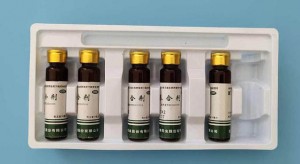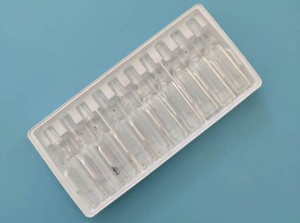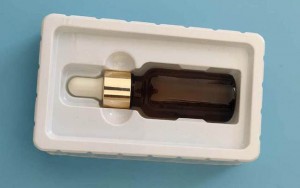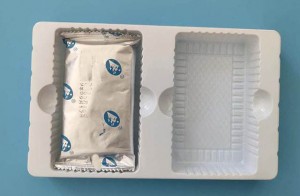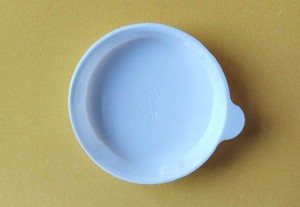The crystal point is a point on them blister packaging aterial, which will seriously affect the appearance of the blister packaging product. The quality problem comes from the sheet supplier. The reason for this is that when the sheet is produced, there are debris mixed In the material, this kind of quality situation occurs, and the solution is to inspect the sheet before producing the blister packaging product.
How is the uneven thickness caused? How to solve such a problem?
There are several common points for uneven thickness, such as shelf, sheet, temperature, etc. It is very important to adjust the position of the product when it is put on the shelf. If there is a dislocation or unreasonable placement, it will cause uneven thickness. What is related to the sheet is that the thickness of the sheet is not adjusted during the production process, so it will cause such a quality problem. The temperature adjustment is also directly related, and the corresponding temperature should be adjusted according to the different materials of different molds, otherwise there will be uneven phenomenon. The solution is to pay attention to the adjustment of the position of the shelf, the negotiation of the supplier of the sheet, and the temperature adjustment to the suitability of the sheet and the mold.
What is a pull wire? How did it happen? How to solve?
The pulling line is a protruding line on the edge of the product, which seriously affects the appearance of the packaging. The reason for the formation is that this situation is related to the structure and manufacture of the plastic mold. The controlled operation of the plastic molding machine, The temperature adjustment has a great relationship with the shelf, and the solution is the quality control of the mold, the adjustment of the machine and temperature parameters, and the shelf extrusion.
What are water ripples and bubbles? How? How to solve?
Water ripples and bubbles are watermarks and bubble points on the surface of the material. Such blister products will directly affect the appearance of the packaged items and reduce the appearance of the packaged items. The cause of the water ripple is the relationship between the sheet manufacturer and the sheet in the production process, and the water ripple is related to the speed of the production of the film. The reason for the bubbles is that the temperature is too high during sheet production or caused by the mixed production of sheets or the infiltration of air during sheet production. Materials with bubbles will lead to perforation and deformation of blister packaging products, becoming defective products. The method is that the quality of the sheet must be observed when the material is purchased or before production before storage or production.
What are scratches? How is this quality problem caused? How to solve?
Scratches are scratches that appear on the surface of blister products after they are produced, and are also a frequent problem in quality. The reason is that in the production process, there are many manual processes, which are prone to collision and friction. Punch personnel and packaging personnel The way of operation is the key link. The solution is to handle the product with care, keep the worktable clean and hygienic, and wear gloves and other related matters for staff, which can also effectively prevent scratches. There are many manual processes for blister packaging products. Every link must be paid close attention to avoid defective products.
